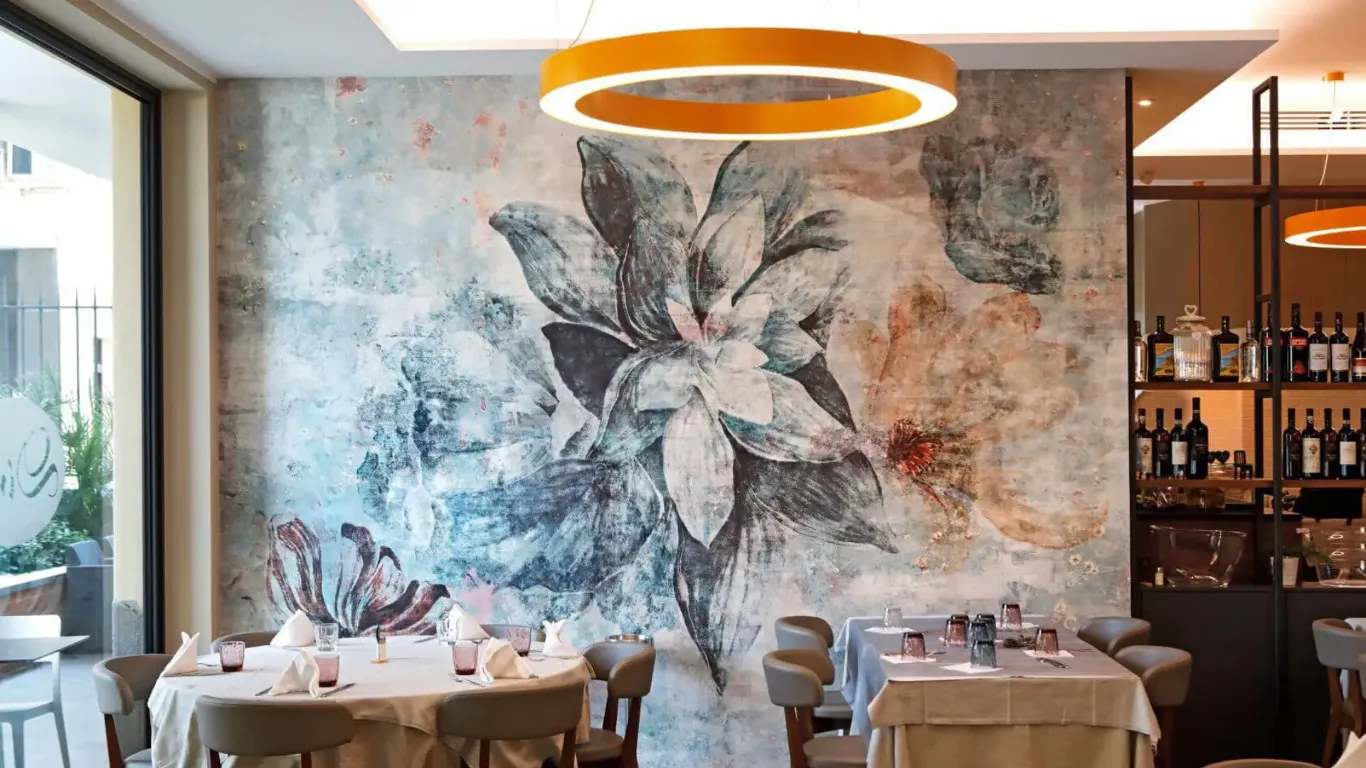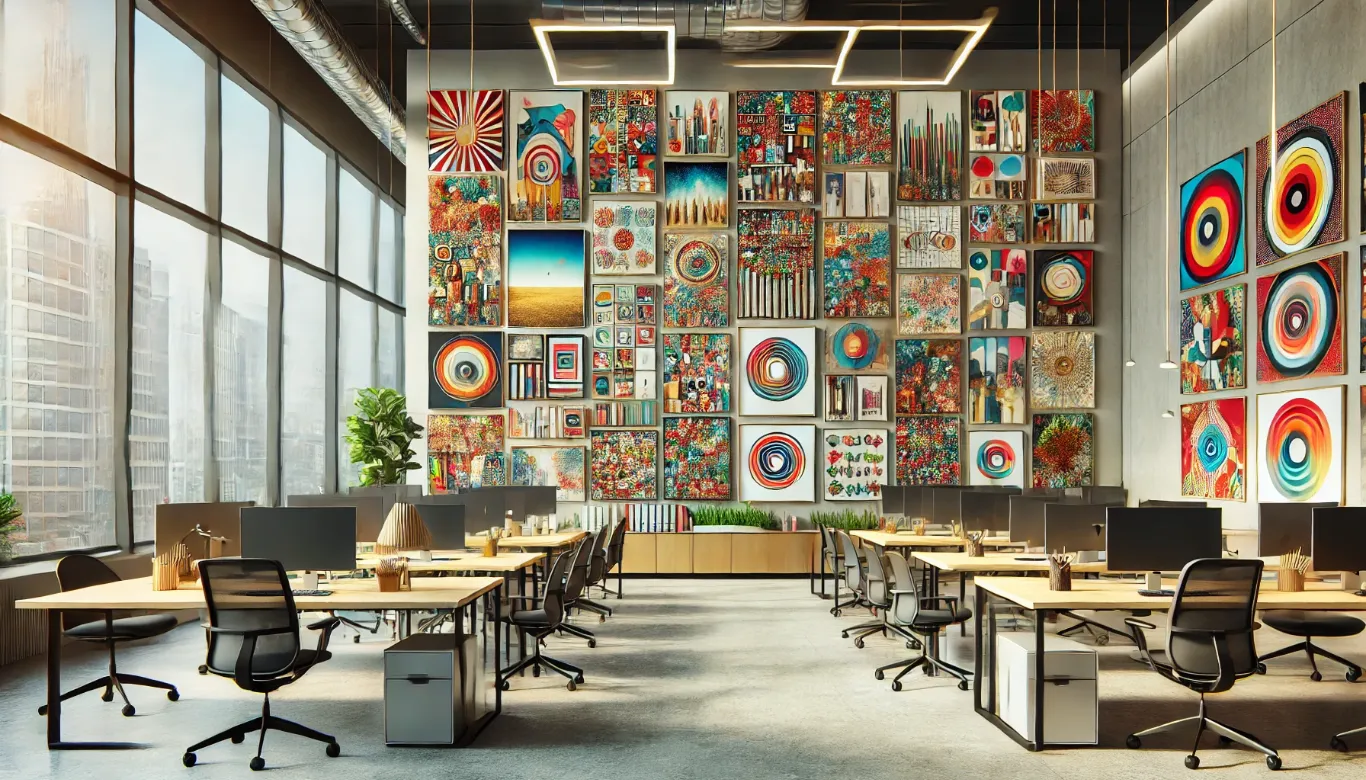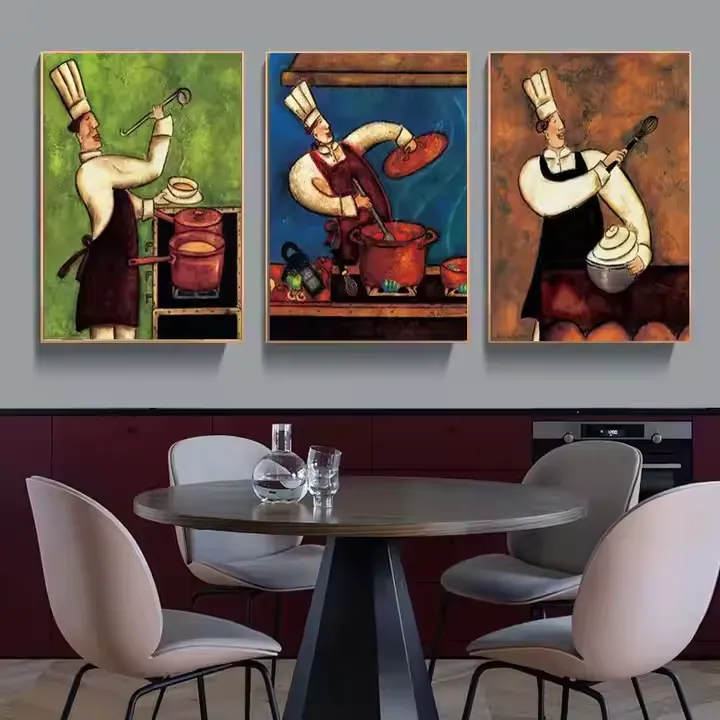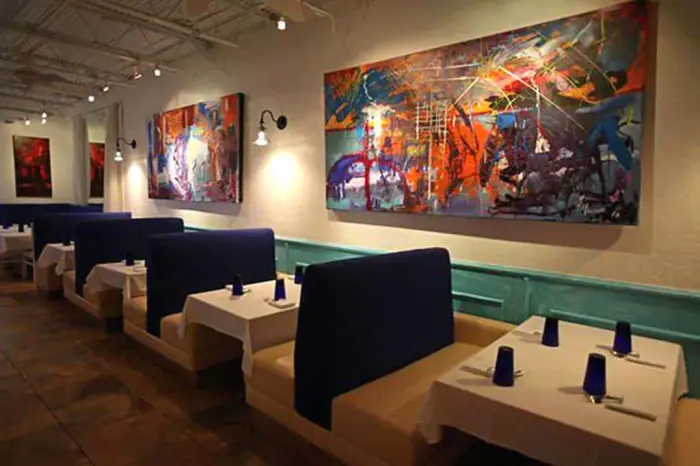Choosing a custom painting for your business is more than just filling wall space; it's about crafting an atmosphere, reinforcing your brand identity, and inspiring employees and clients. A custom oil on canvas painting can be a powerful statement, but with diverse styles, artwork sizes, and frame options how do you choose the perfect one? This blog guides you through finding the ideal corporate art that resonates with your company's vision, delving into the nuances of style, color, placement, and the collaborative process of commissioning art.
1. Defining Your Brand Aesthetic: The Foundation of Art Selection

Before exploring styles, deeply consider your company's core values, mission, and target audience. Are you a cutting-edge tech startup, a traditional law firm, or a creative agency? Your office decor inspiration should reflect these elements. A vibrant, abstract piece might suit a modern marketing firm, while a classic landscape could be more appropriate for a financial institution. Think about the emotions you want to evoke. Do you want to project innovation, stability, creativity, or trust? This will inform your art choices. Consider your company's history, its culture, and its aspirations. The art you choose should be a visual representation of your brand's story.
2. Decoding Oil Painting Styles: A Visual Glossary for Business Owners
Let's explore popular oil painting styles and their alignment with different business types, providing a deeper understanding of their characteristics:
- Realism: This style meticulously depicts subjects as they appear in real life, conveying accuracy, detail, and stability. Business oil portraits rendered realistically project professionalism and trustworthiness. This style suits established businesses, law firms, and medical practices. Think of the detailed still lifes of the Dutch Masters or the precise portraiture of John Singer Sargent. Realism can also be used to depict scenes relevant to your business, such as a cityscape for a real estate firm or a product for a manufacturing company.
- Impressionism: Characterized by visible brushstrokes, capturing fleeting moments and light, Impressionism evokes creativity, innovation, and dynamism. Think Monet's water lilies or Degas' dancers. This style is excellent for advertising agencies, design studios, and tech companies seeking a vibrant and energetic feel. The focus on light and movement can also symbolize progress and forward-thinking.
- Abstract: Abstract art uses shapes, colors, and textures to create non-representational images, sparking thought and making it open to interpretation. Think Kandinsky's vibrant compositions or Rothko's color fields. This style adds sophistication and intrigue to modern offices, ideal for forward-thinking businesses. Abstract art can also be a powerful way to express complex ideas or emotions without being literal.
- Expressionism: This style emphasizes emotions and subjective experience, often using distorted forms and vibrant, sometimes jarring, colors. Think Munch's "The Scream" or works by the German Expressionists. While less common in traditional offices, Expressionism can be a powerful choice for creative industries or businesses with a strong focus on artistic styles, conveying passion and energy. It can also be a way to challenge conventional thinking and project a bold and unconventional image.
- Surrealism: Exploring dreams and the subconscious, Surrealism creates unexpected, often bizarre imagery. Think Dali's melting clocks or Magritte's bowler hats. While not for all businesses, it's a conversation starter, adding a unique touch to creative spaces, perhaps for a design firm or an advertising agency wanting to project a unique and imaginative identity. Surrealism can also be used to spark creativity and encourage out-of-the-box thinking.
- Minimalism: Focusing on simplicity and clean lines, using a limited palette and minimal elements, Minimalism creates calm, order, and sophistication. Think Agnes Martin's serene grids or Donald Judd's geometric sculptures. Minimalist office decor ideas are perfect for modern offices aiming for a clean, uncluttered aesthetic, conveying sophistication and efficiency. Minimalism can also be a way to create a sense of spaciousness and tranquility.
- Photorealism: This style aims to replicate photographs with incredible detail and precision. It can convey a sense of hyper-realism and meticulousness. This style could be suitable for business portrait paintings that value precision and accuracy, such as engineering firms or scientific institutions. Photorealism can also be used to showcase products or achievements in a highly detailed and impressive way.
3. Industry Alignment: Tailoring Art to Your Field for Maximum Impact

Consider your industry when choosing a painting style. A law firm might opt for a realistic portrait of its founders or a classic landscape, conveying tradition and stability. A tech startup might prefer a bold abstract piece, projecting innovation and forward-thinking. Office paintings on canvas ideas for healthcare might include calming nature scenes or abstract designs with soothing colors, creating a sense of peace and well-being. A financial institution might choose art that conveys stability and growth, such as a landscape with a strong horizon or an abstract piece of art with balanced forms.
4. Color Psychology: Painting the Mood of Your Workspace
The color palette of your chosen personalized artwork significantly impacts your office's mood. Warm colors like reds and oranges can create energy and excitement, while cool colors like blues and greens promote calmness and focus. Consider your brand colors and the desired atmosphere when selecting a painting. A splash of vibrant color can energize a workspace, while muted tones can create a more serene environment. Consider the psychology of color and how it can affect the emotions and behavior of your employees and clients.
5. Commissioning Your Custom Artwork Printing: A Collaborative and Creative Process
Once you've decided on a style, find professional artists whose canvas print resonates with your vision and who have experience in corporate art. Discuss your ideas, be clear about expectations, and ask about their creative process. A good artist will listen to your needs and offer valuable insights. Consider requesting a mock-up or sketch before the final piece is created. Be sure to discuss the size, framing, and placement of the artwork with the artist. Ask about their experience with similar commissions and request references.
6. Office Decor Ideas for Work and Home: Creating a Consistent Aesthetic Experience
Remember, art isn't just for the office. Office decor ideas for home can benefit from custom artwork, creating a cohesive and inspiring workspace. A smaller, complementary piece in a home office can extend your brand's aesthetic and create a sense of continuity. This can be especially important for remote workers who want to maintain a connection to their company culture. Celebrate love and romance by designing a digital oil painting on canvas for a couple with a photo from their special occasions, like a wedding, anniversary, or engagement.
7. Office Decor Inspo: Finding Your Muse in the World of Art

Seeking office decor inspo? Browse online galleries, visit art museums, consult with art consultants, and explore design magazines. There are countless resources to help you find the perfect office clip art or commercial art to complement your custom oil painting. Create a mood board with images that inspire you to help guide your decisions. Don't be afraid to explore different artist styles and artists' custom-made painting until you find the perfect fit for your business. Communicate directly with a real artist no middlemen or factory workers. Artists can register and use our platform from anywhere in the world, as long as they submit portfolio samples that pass our rigourous standards.
8. Creating a Cohesive Look: A Holistic and Integrated Design Approach
Your custom oil painting should harmonize with your overall office decor. Consider furniture, lighting, and other decorative elements to create a cohesive and visually appealing space. The art should complement, not clash with, the existing design. Think about the scale and proportion of the artwork in relation to the size of the room and the other furnishings. Consider the style of your furniture and choose artwork that complements it.
9. Placement and Lighting: Showcasing Your Art Effectively
The placement and lighting of your custom oil painting are crucial for showcasing it effectively. Consider the natural light in the room and how it will affect the artwork at different times of day. Use artificial lighting strategically to highlight the painting's key features. Consider the viewing distance and ensure that the artwork is placed at an appropriate height.
10. Making a Statement with Art: Beyond Decoration, a Reflection of Your Brand
A well-chosen custom oil painting is a powerful tool for communicating your brand identity and creating a welcoming and inspiring environment. It's an investment that can pay dividends for years, enhancing your brand image and creating a positive impression on clients and employees. It's not just decoration; it's a reflection of your company's values and vision. It's a way to tell your company's story and create a lasting impression. Consider the long-term impact of your custom business painting choices and how they will reflect your brand over time.
11. Maintaining Your Investment: Preserving Your Custom Artwork
Once you've invested in a custom oil painting, it's important to take steps to preserve it. Keep the artwork away from direct sunlight and extreme temperatures. Dust the painting regularly with a soft cloth. Consider having the custom artwork oil painting professionally cleaned every few years to remove any dirt or grime that may have accumulated. Proper care will ensure that your investment lasts for generations.







